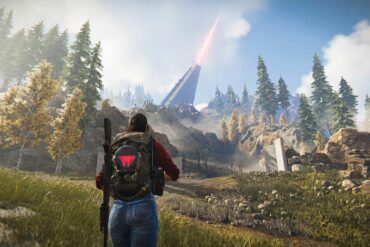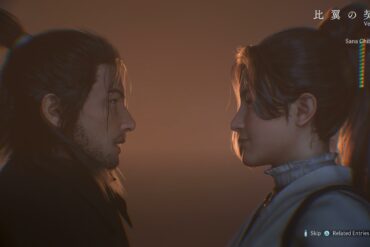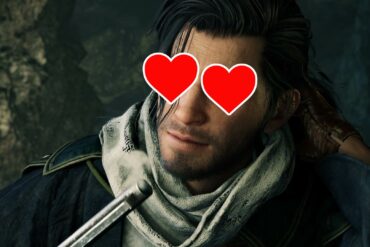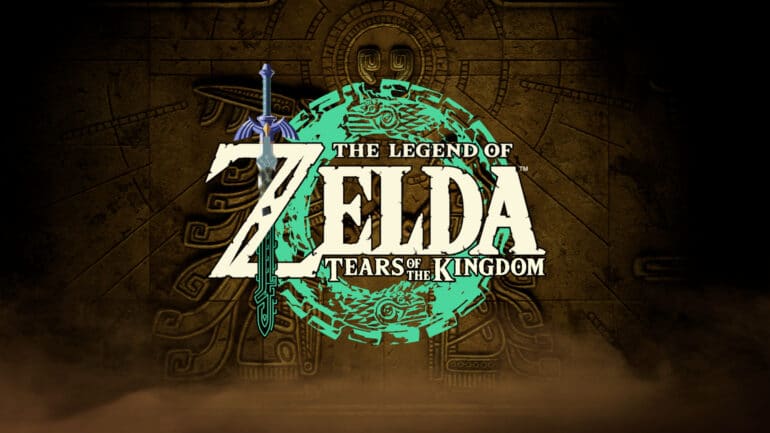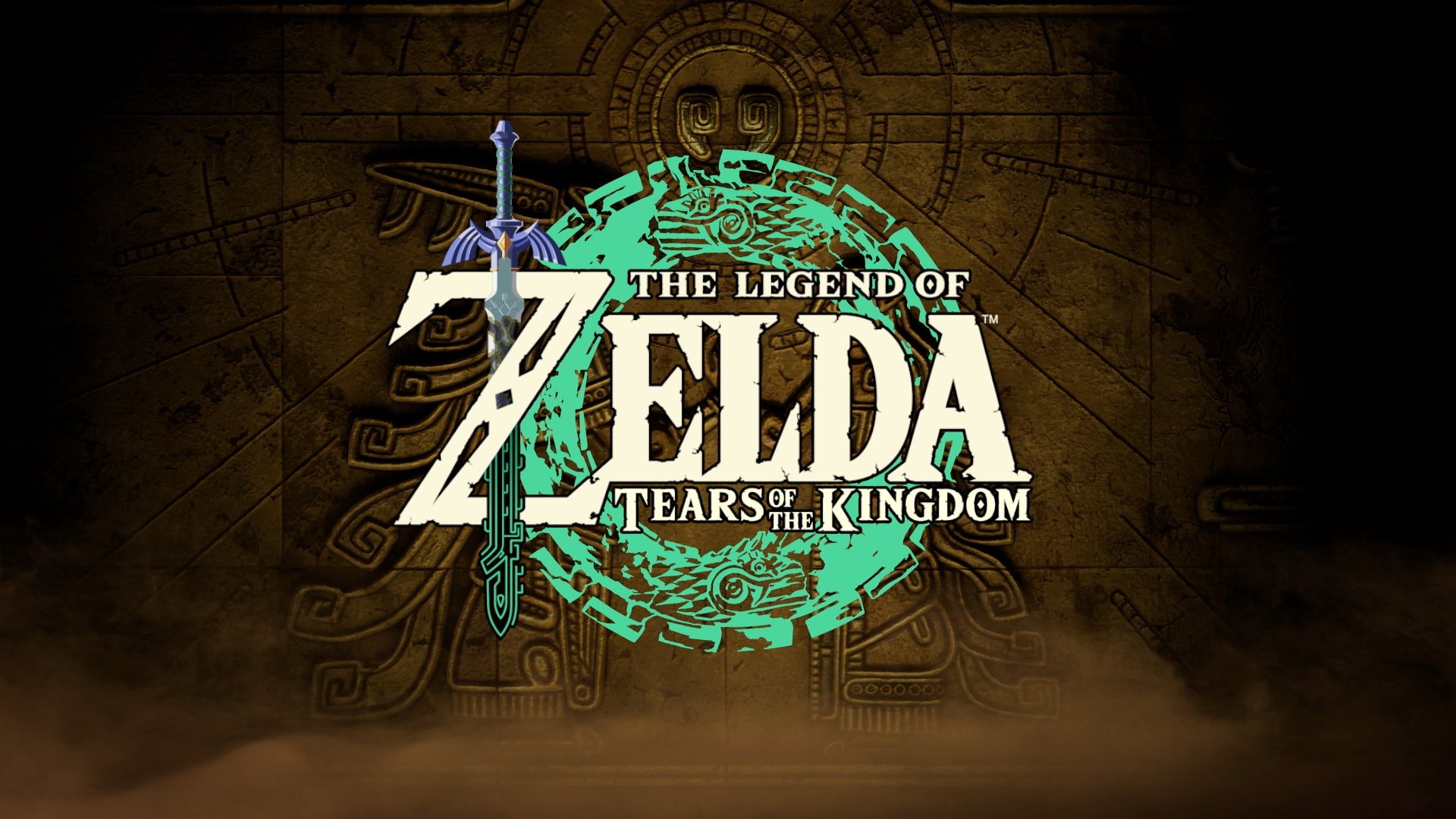It’s been a few days since Tears of the Kingdom initially launched, and that has given me the luxury of time to settle into it post-reviews. Seeing all the 10 out of 10s (and the occasional rogue 6) made it feel like writing this review would be an exercise in tedium, repeating the same tired words of enthused reviewers.
However, having now sunk a considerable amount of time into Tears of the Kingdom myself, I can’t confidently state that it is a 10 out of 10. In fact, it is not even a 9. There’s a lot that this game does right, and for fans of Breath of the Wild, picking it up should be an immediate priority. However, it seems prudent to begin this review by stating simply: Tears of the Kingdom is not perfect, and it has plenty of flaws.
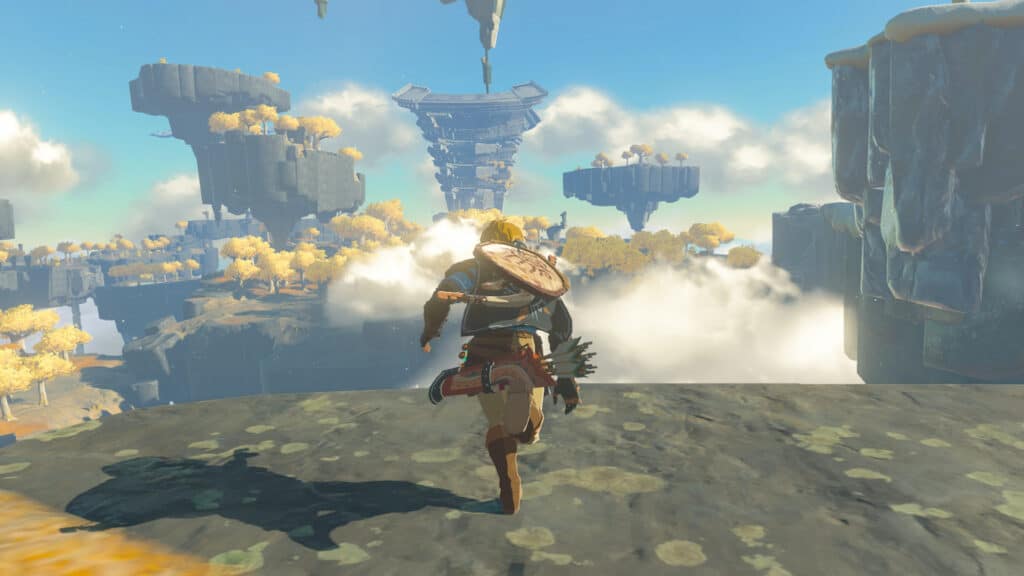
“Tears of the Kingdom offers an unparalleled open world the likes of which the Switch and competing platforms have simply never seen.”
Before I delve into the flaws of Tears of the Kingdom, I want to begin with the positives. First and foremost, Tears of the Kingdom (or, as it will undoubtedly be referred to in the near future, TOTK) is a technical masterpiece. This magnificent triumph seems to defy all odds considering the dated hardware it’s running on.
At a measly 16GB, Tears of the Kingdom allows players to seamlessly travel between the Depths, an underground cavern that runs the length of the entire map, Hyrule itself with its newfound penchant for tunnel systems and expansive caves, and the plethora of Sky Islands with their own intricacies and smattering of puzzle-laden buildings.
Very minor framerate issues aside (you might experience a handful of frame drops while exploring particularly particle-heavy areas), TOTK offers an unparalleled open world the likes of which the Switch and competing platforms have simply never seen. Even Cyberpunk 2077, the supposed next-gen in open-world gaming, cannot offer such dynamic and seamless exploration.
Of course, all of this is complimented by Tears of the Kingdom’s gorgeous and seemingly ageless art style. The striking yellows and dilapidated greys of the Sky Islands feel suitably ancient, evoking hints of the forloned Castle in the Sky from the Ghibli film of the same name. Similarly, the rolling hills and verdant valleys full of vibrant green grass and sparkling sapphire waters capture the picturesque serenity that the franchise has since become iconic for.
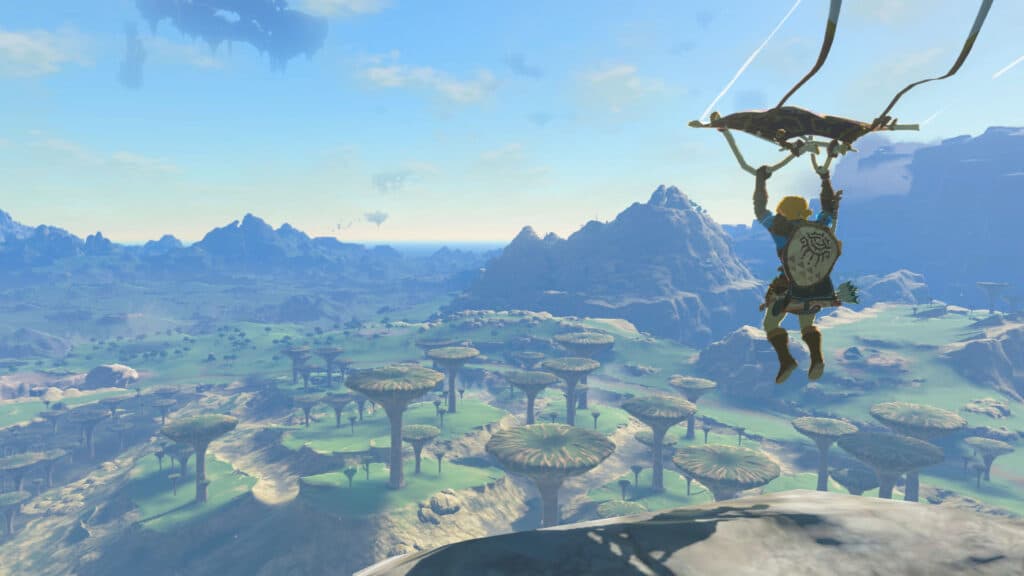
“Tears of the Kingdom’s world feels significantly more alive than Breath of the Wild’s.”
In that sense, TOTK feels like a masterclass in what a team of talented developers with an unlimited budget and time can do. Comparatively to the latest Pokemon, Tears of the Kingdom looks as if it were made in a vacuum in which creativity and joy triumph over corporate greed.
In many ways, the scale of TOTK’s open world feels like its biggest accomplishment over its predecessor. But the impressiveness of that scale would be nothing were it not for the density of activities and life within the world. As the famous saying goes, “Four times the size, sixteen times the detail.”
TOTK’s world feels far more alive than Breath of the Wild’s. You will find more people roaming the wilds, parties of monster hunters engaged in furious battles with Bokoblins, travelers searching for mysteries, merchants looking to offload their seemingly endless supply of restless crickets, and so on. In fact, TOTK’s world is so teeming with life that even the once elusive Koroks can be found out in the open, desperately awaiting someone to reunite them with their friends.
In some ways, this newfound sense of bustling activity diminishes the peaceful and occasionally haunting beauty of BOTW’s apocalyptic landscapes. However, it is, in my eyes, a vast improvement owing to the fact that exploration feels more rewarding and immersive. Furthermore, thanks to the increase in people wandering around Hyrule and its many towns, TOTK has a significantly greater amount of side content for you to complete.
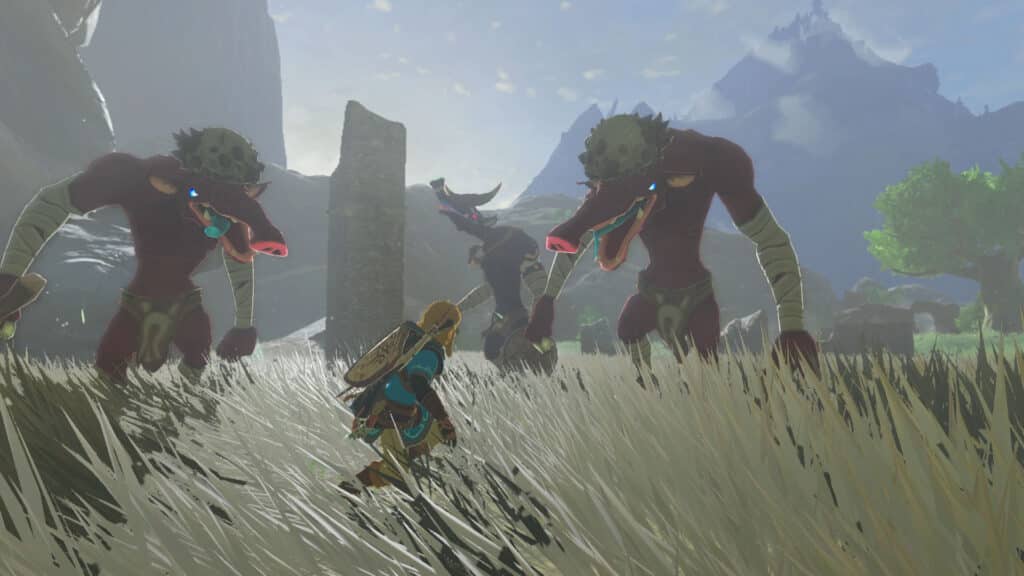
“For the open-world enthusiast, this will feel simultaneously cozy and exciting, a perfectly brewed concoction of familiar adventure that constantly surprises you.”
Side quests make a return from BOTW but feel substantially improved. Their questlines are less obtuse, and many extend beyond the familiar fetch quest formula. While there are plenty of basic questlines that pepper the world with a baseline meaning, the various side quests that extend themselves to involve a cast of memorable characters give TOTK its true purpose.
Of course, beyond questing, players have a plethora of additional side content to complete. From helping hold up signs by using the new Ultrahand ability (more on that later) to completing a new set of Shrines dedicated to the proper utilization of the game’s mechanics, there’s plenty to do in Hyrule.
For the open-world enthusiast or Breath of the Wild admirer, all of this will feel simultaneously cozy and exciting, a perfectly brewed concoction of familiar adventure that constantly surprises you. But, for those who prefer a more linear experience, Tears of the Kingdom and all of its incessantly overwhelming intricacies, activities, and eye-poppingly engrossing wonders may feel engulfed by the sheer unceasing nature of it all.
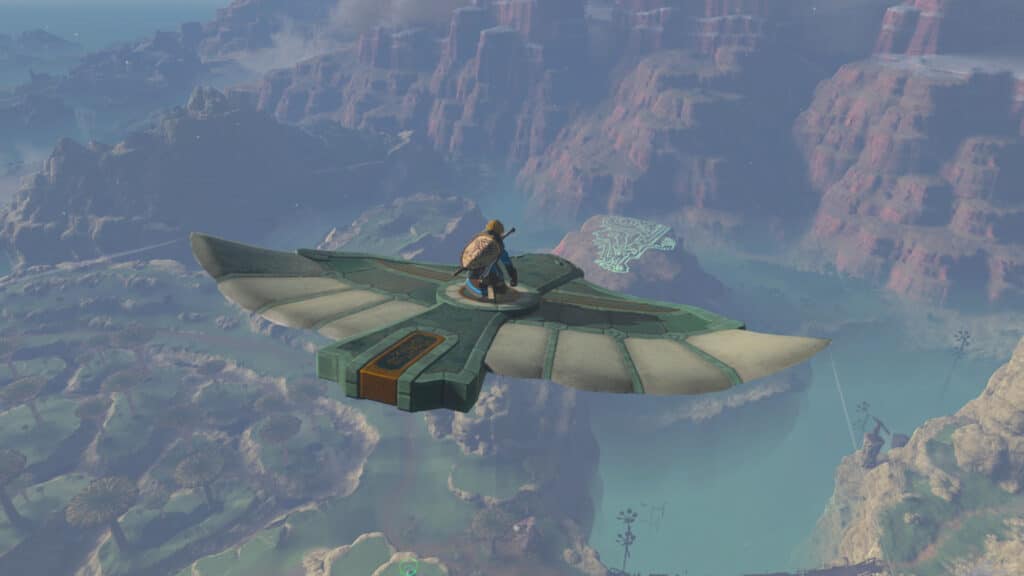
“TOTK does a far better job of fleshing out its world, characters, and narrative than its predecessor but is still far too hesitant to put its story front and center.”
However, if you do find yourself overwhelmed in Tears of the Kingdom, there is, fortunately, a more nuanced and present narrative to fall back on. I have left the discussion of TOTK’s story to the less overindulgent end as it’s not a highlight in the grand scheme of things.
While Nintendo has undoubtedly done its best to address the many valid criticisms levied at BOTW’s weak storyline that did little to offer much nuance to its characters and world, it continues to perpetuate the belief that this franchise has seemingly very little to do with the titular Legend.
That being said, the game’s opening does a remarkable job of introducing you to its terrifying new central villain and explaining away Link’s sudden lack of Hearts, Stamina, or iconic Master Sword. It’s a cinematic start to an otherwise freeform experience that doesn’t rely too much on a central narrative to propel its more creative ambitions.
Simply put, TOTK does a far better job of fleshing out its world, characters, and narrative than its predecessor but is still far too hesitant to put its story front and center. Do not buy Tears of the Kingdom for its narrative alone. You will be disappointed.
It is at this point that the dread of criticizing such a tremendous achievement swells in my chest like a hive of angry bees. Because, for all the wonder and splendor of TOTK’s open world, the unabashed and frankly incredibly ambitious creativity at play feels precariously fiddly. It’s hard to put it into a single word how at times, compromised, broken, arduous, and needlessly complicated Tears of the Kingdom can feel. So, fiddly will have to suffice.
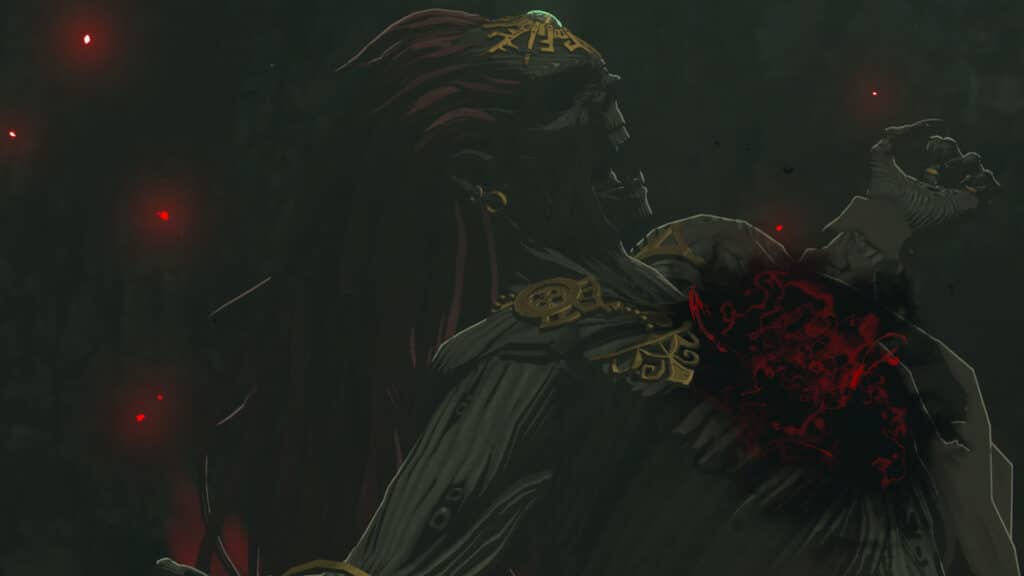
“While, in theory, the Fuse mechanic should open up a Pandora’s box worth of creativity, instead, it shrouds Tears of the Kingdom’s weapon system in uniformity.”
Perhaps it is best to begin with Tears of the Kingdom’s perplexing and controversial decision to carry over the durability mechanic from BOTW. However, while Breath of the Wild used the mechanic to encourage players to experiment with its range of unique weapons, TOTK uses it to force players to use its new Fuse mechanic.
As many will have seen in the limited promotional material TOTK actually received, the Fuse mechanic allows you to connect your weapon and shields to almost anything. Logs, mine carts, mushrooms, flame throwers, and more can be essentially taped to your weapons to give them additional power and abilities. More importantly, however, it extends a weapon’s durability, allowing you to use it for longer.
The downside is that all weapons are now “decayed,” meaning their base durability and power start off incredibly low. As a result, you’re forced to Fuse them almost instantly, attaching a once potentially stylish or impressive-looking blade to a giant rock, log, mine cart, or other assortments of goofy-appearing amendments. Additionally, in doing so, you alter the weapon’s attack style. For example, Fusing a rock to a sword turns it into a hammer.
Consequently, discovering new weapons no longer has the same allure or luster it once had in BOTW. Every weapon is essentially a base from which to fuse whatever object you find lying around. While, in theory, this mechanic should open up a Pandora’s box worth of creativity, instead, it shrouds TOTK’s weapon system in uniformity. Whenever I find a Claymore, I know it has little use in combat without shoving a boulder or spiked ball on the end. Every weapon without the Fuse mechanic is useless, making it a necessity, not a potential creative outlet for those who wish to engage with it.
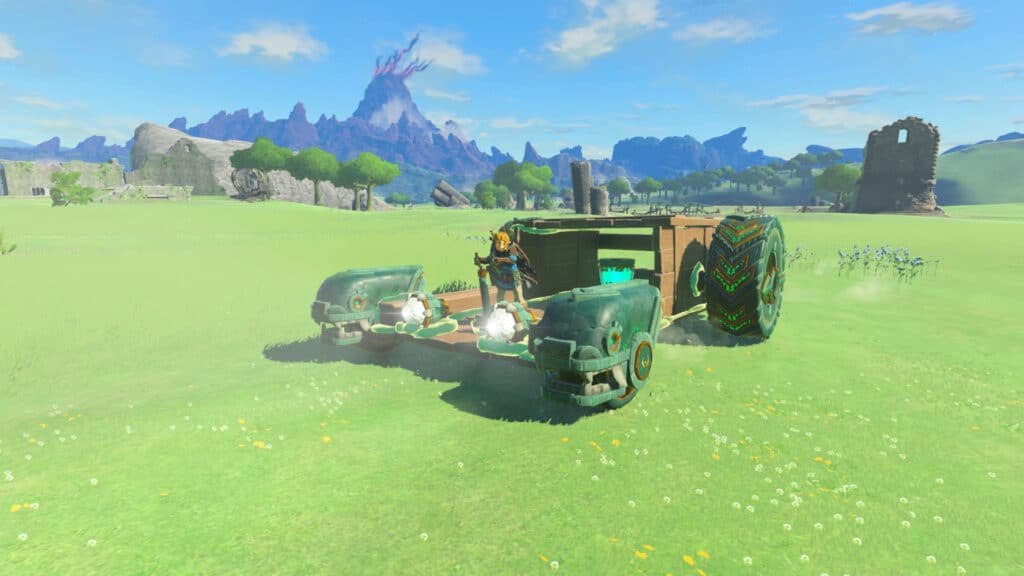
“Ultrahand can be an alienating mechanic, requiring a significant amount of patience, creativity, and time-consuming commitment to make the most out of it.”
Conversely, the Ultrahand mechanic, TOTK’s swansong achievement in the eyes of many, feels overwhelmingly unbridled in its creative possibilities. Clips of players creating their own mechs, fighter planes, and orbital lasers using the Ultrahand mechanic have begun surfacing online, revealing its truly unlimited potential.
However, for many, it will feel like a wasted spectacle. Ultrahand can be an alienating mechanic, requiring a significant amount of patience, creativity, and time-consuming commitment to make the most out of it. TOTK does not offer guidance on how to build a mech or orbital laser, for example. Players have figured this out through their own ingenuity and creativity. In that sense, Ultrahand is a truly freeing experience, much like, say, Lego. At the moment, it truly feels like anything is possible.
This is why it is so frustrating that Ultrahand feels incredibly fiddly to use. It is this facet of its overall design that ultimately makes the mechanic feel so alienating in the first place. Because while it is clear that a considerable amount of effort has gone into masterfully developing this core principle of freedom, the implementation of it is so poor and counterintuitive at times that most players are likely to struggle with maximizing its potential.
Simply put, the experience of using Ultrahand is so un-user friendly due to its fiddly, inaccurate control and inconsistent rules (such as creations breaking apart seemingly at random) that, at the very least, I struggled to appreciate it as the crowning achievement it truly is. Of course, you can just use it for its most basic purpose: solving puzzles and crossing challenging terrain. However, in doing so, the feeling that you’re not quite getting the most out of the TOTK experience will forever eat away at you.
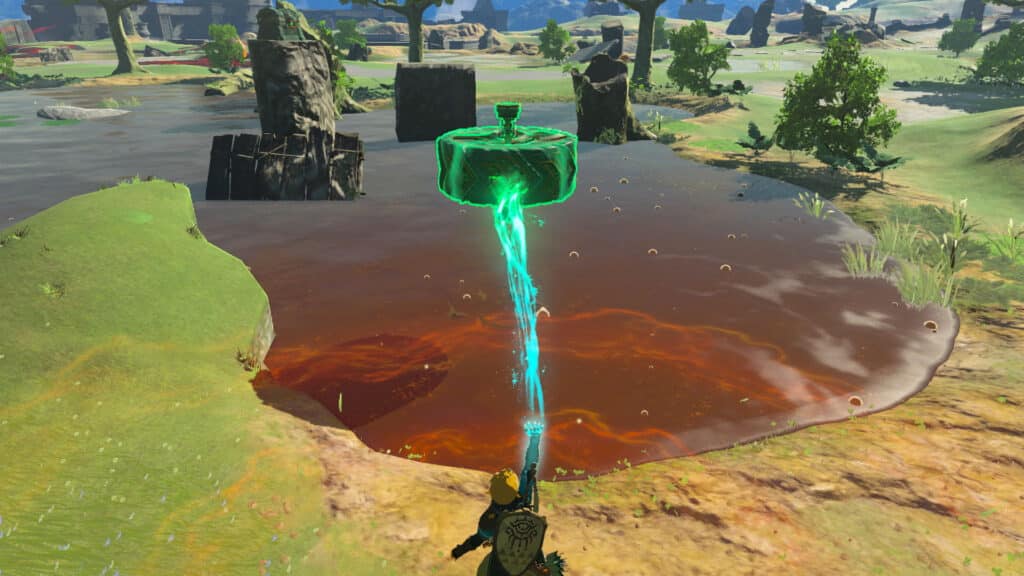
“Tears of the Kingdom hasn’t adequately addressed the numerous unnecessarily fiddly design choices of BOTW.”
Really, neither of these issues is particularly detrimental to the overall experience. Tears of the Kingdom’s achievements are not overshadowed by the inconsistencies of the occasionally alienating Ultrahand mechanic or the ridiculousness of Fusing weapons to minecarts. However, they do fundamentally alter the overall experience that fans may have familiarized themselves with by playing hundreds of hours of BOTW.
TOTK and Breath of the Wild are vastly contrasting experiences, despite sharing a lot of similarities. Even Hyrule, which many feared would simply be copied and pasted across, feels like an entirely different, and at times unrecognizable, world. In many ways, this is a positive as it ensures that Tears of the Kingdom keeps the Zelda experience feeling fresh. However, for diehard fans or even for those who enjoyed the peaceful respite BOTW offered, it will feel like a negative.
Unfortunately, despite asserting itself as a different and occasionally improved experience, Tears of the Kingdom hasn’t adequately addressed the numerous unnecessarily fiddly design choices of BOTW. While there are plenty of quality-of-life changes, such as Shrines no longer having minute-long introductions before you can move, many aspects of TOTK’s design feel cumbersome.
For example, equipping an item to your arrow (which gives it a different quality, such as increased damage, elemental damage, or turning it into a missile) requires you to hold Up on the D-Pad and then scroll through your entire list of materials before you eventually find what you’re looking for. However, equipping the same material again is not automatic, so you’ll need to repeat the entire process over and over until you’re done.
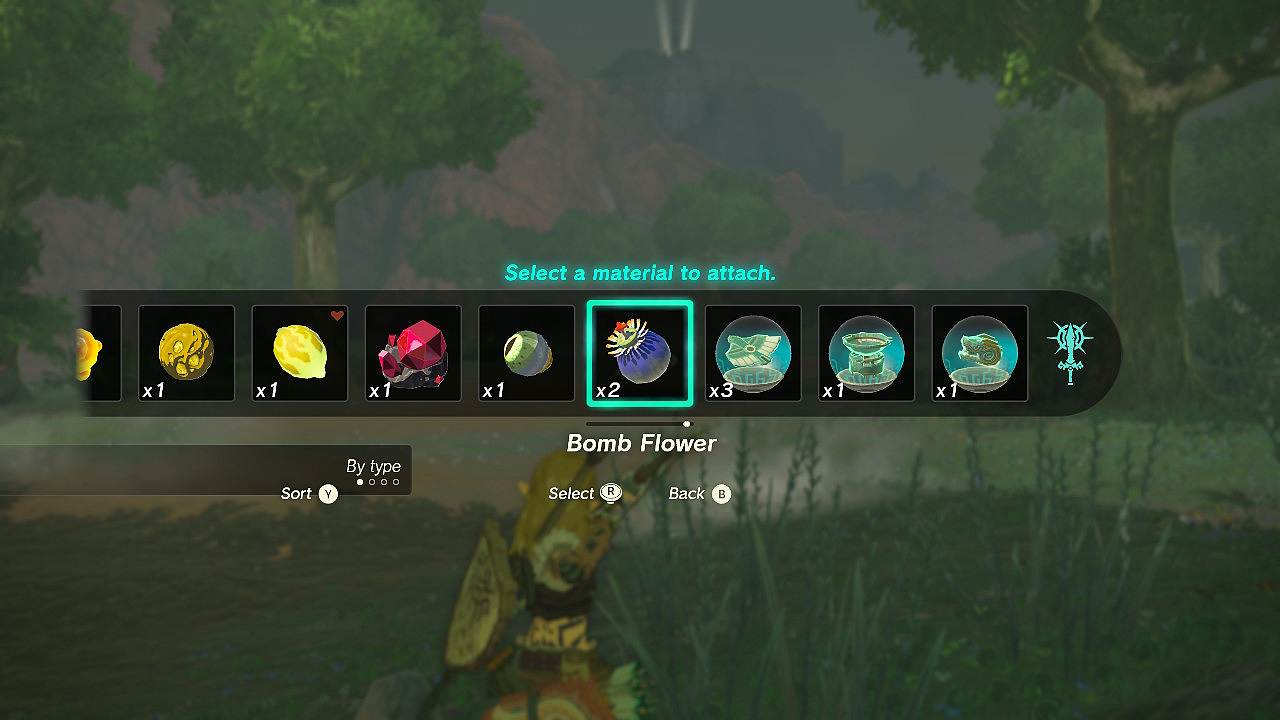
“I highly recommend Tears of the Kingdom and hope that you too enjoy the childlike joy of bounding into Hyrule once again.”
There is plenty more I could point out, such as the arduous cooking mechanic that remains entirely unchanged or the fact that combat continues to feel unpolished and, at times, brutally unfair due to the imprecise nature of enemy hitboxes and the dodge mechanic. Additionally, you should expect to spend a considerable amount of time scrolling through wheels or lists of mechanics and items in the heat of combat or during quiet exploration, completely breaking your immersion. Unfortunately, the tedium this creates never goes away and is only exacerbated the longer you play.
However, despite all of it, the fiddliness, the overwhelming freedom, and questionable mechanics, Tears of the Kingdom continually impresses, staggers, and renders me speechless even as its runtime reaches ridiculous heights. Its continued striving for innovations in the genre, coupled with its flawless execution of blissful exploration and stunningly beautiful visuals, make for a wonderful experience that never gets old.
Sure, Tears of the Kingdom may not be perfect. Still, it is a technical marvel that excels at restoring a sense of magic and wonder in the world of video games and revives in players the mystical Nintendo charm that felt as if it were all but gone mere moments before its release.
In many ways, much like Breath of the Wild, TOTK raises the bar in what a genuinely freeform open-world experience looks like and continues the series’ tradition of putting its competitors to shame. I highly recommend Tears of the Kingdom and hope that you too enjoy the childlike joy of bounding into Hyrule once again.
*Disclaimer: Reviewed on Nintendo Switch, code was provided by Nintendo.


